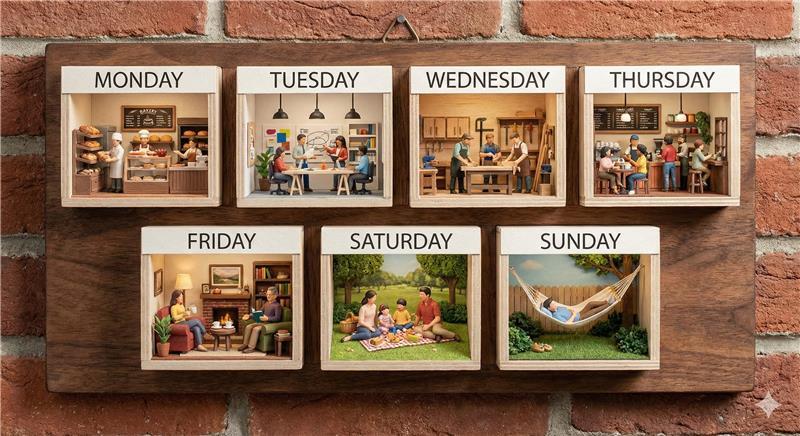How to Know If a Four-Day Workweek Is Right for Your Business
The four-day workweek has become one of the most talked-about workplace shifts of the last decade. Large corporations are experimenting with it....
4 min read
 Anne Becker
· May 25, 2023
Anne Becker
· May 25, 2023

Accounting for restaurants: is it different from accounting for other industries? Well, yes and no. There are certain practices that universally carry over (for small businesses), but that said – there are certain challenges that restaurants will face that might not apply to other industries. The problem? No one taught you how to do those things before you opened your restaurant.
And what happens after you open? We’re pretty sure that you don’t have MORE time to work on your business. In fact, every day after opening will lead to more challenges and issues that need to be faced TODAY. You don’t have time to figure out a better accounting process – or do you?
Here’s what you need to know about accounting for restaurants so that you can give yourself (and your business) the best chance at success.
Not all restaurants are the same. Some are quick service, others are full service, and still others might basically amount to bar service. While each of these types of restaurants has their own set of challenges – here’s something that binds them: gross margins.
What does that mean? Here we go.
The gross margin is the difference between revenue and COGS (cost of goods sold), divided by revenue. Generally, it is calculated as the selling price of an item, less the cost of goods sold (e. g. production or acquisition costs, not including indirect fixed costs like rent), then divided by the same selling price.
That means understanding how your overhead affects your profitability. For example, you’ll need to keep food cost between 28% - 35%. It also means being aware of how staffing costs might affect your bottom line. A full service restaurant is going to need to be more staffed than a quick service place, which will have much lower payroll and ultimately lower overhead.
Use the above calculation to figure out what percentage your gross margin is. You might be surprised to learn this, but the average restaurant’s gross profit margin is only 3-5% – and nearly all restaurants will fall somewhere between 0 - 15%. Does that seem like a small margin for error? We agree. Which is why planning and mapping your financials is so important.
We already made mention of the fact that as a restaurant owner, most of your time is probably spoken for. It’s probably why you haven’t done a better job of tracking expenses. The bad news? Well, that won’t get any easier. The good news? There are tons of POS systems that can help you manage your accounting.
If you’re using an old POS (point of sale) system, it means having to manually go back and type in large amounts of numbers into a spreadsheet, then re-evaluating those numbers every month. Those tasks are actually fairly easily automated. When some of our clients come to us, they’re using extremely dated POS software – one of our first moves is to get them to update it.
While there are many good options, one that we find extremely effective with integrating into QuickBooks is TOAST. TOAST is an all-in-one POS system that will automate your sales and upload them into QuickBooks without you having to do anything. It will help with sales tax filings and even audits. This is far from the only option, but it’s one that we’ve seen our clients find extremely effective. Do your research and figure out which one works best for you.
What POS system are you currently running? Is it doing the job you need it to, or are you just not updating it because it’s ‘easier’ to put it off? If it’s not working for you, it might be time for an upgrade.
Look, there’s no way for this not to come off as a bit of marketing copy, but it’s true. If you aren’t currently running your financials monthly to get accurate P&Ls, you need help. Find someone who can. Whether it’s us or someone else, having someone work with you is less about “paying that person to do your taxes” and more about working with professionals with decades of experience in your industry.
Basically, your accountant will need access to financial information. That includes bank statements, loans, any and everything you’re logging from your POS. It also means simple organizational things like having all your vendor emails go to the same email address so that they’re properly logged.
When they have that data, they’ll be able to help you plan. Any good accounting firm will have at least one tax planning meeting a year, and most will do several. We try to meet with our clients at least twice, if not three times, a year to make sure that their tax strategy is sound.
There’s no shame in asking for help. In fact, it’s foolish not to. If this is something you’ve been putting off because you’ll ‘get around to it’ let us give you a spoiler alert: You probably won’t. That’s OK, you’re also not cooking all the food by yourself or bussing the tables or wiping down every countertop. For that, you hired folks. Maybe it’s time to think about that so you can get away from worrying about finances and back to the things you loved about your business.
We’ll have even more tips and lessons in the coming weeks and months for restaurant owners looking to learn more about how to create a financially successful business. If you’re hungry for more now, schedule a call and let's talk!

The four-day workweek has become one of the most talked-about workplace shifts of the last decade. Large corporations are experimenting with it....

We've all seen the headlines. Another major company announces that everyone needs to be back at their desk. No exceptions. And if you're running a...

If you work with a payroll provider for your small business, payroll typically runs on a set schedule with very little day-to-day involvement from...